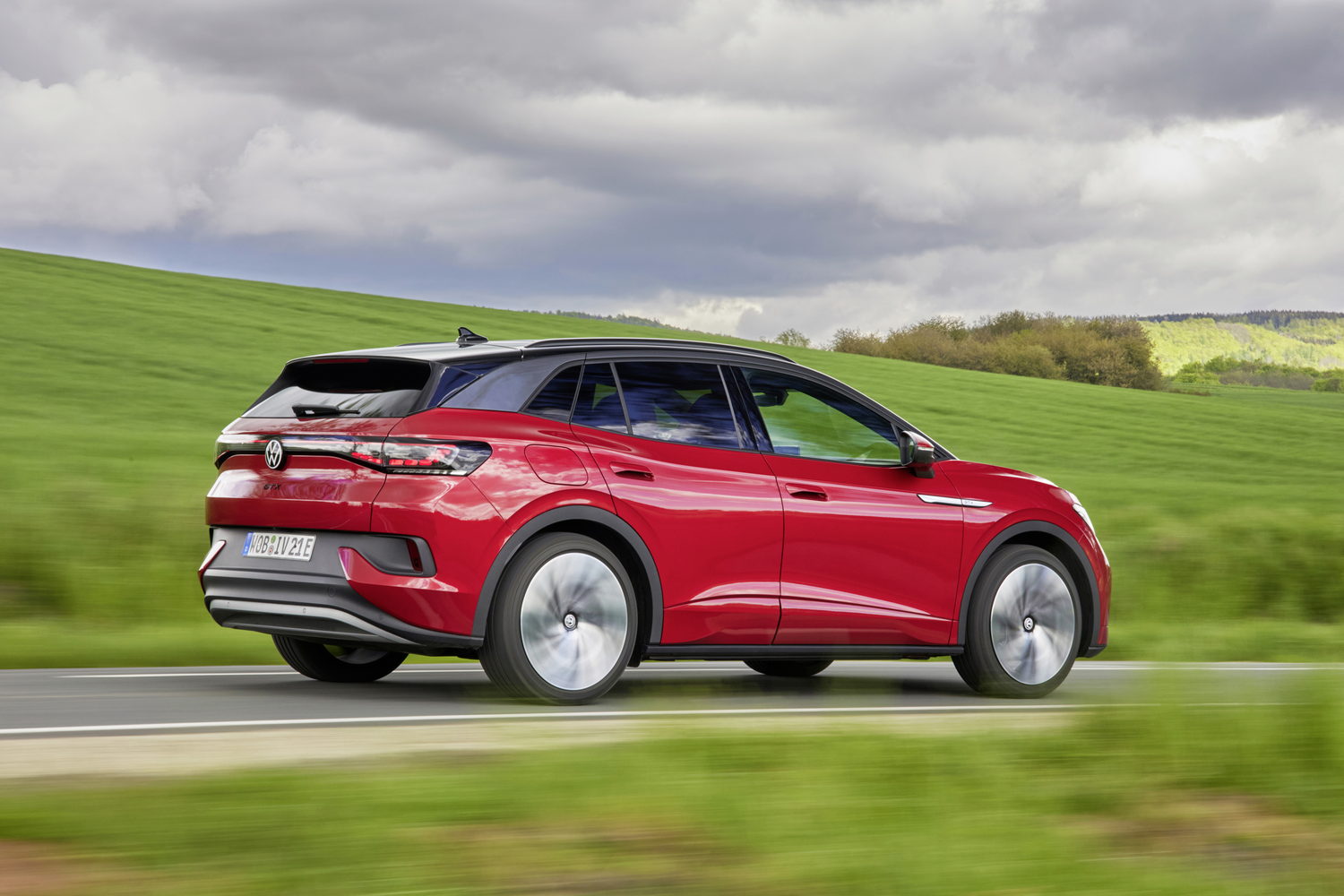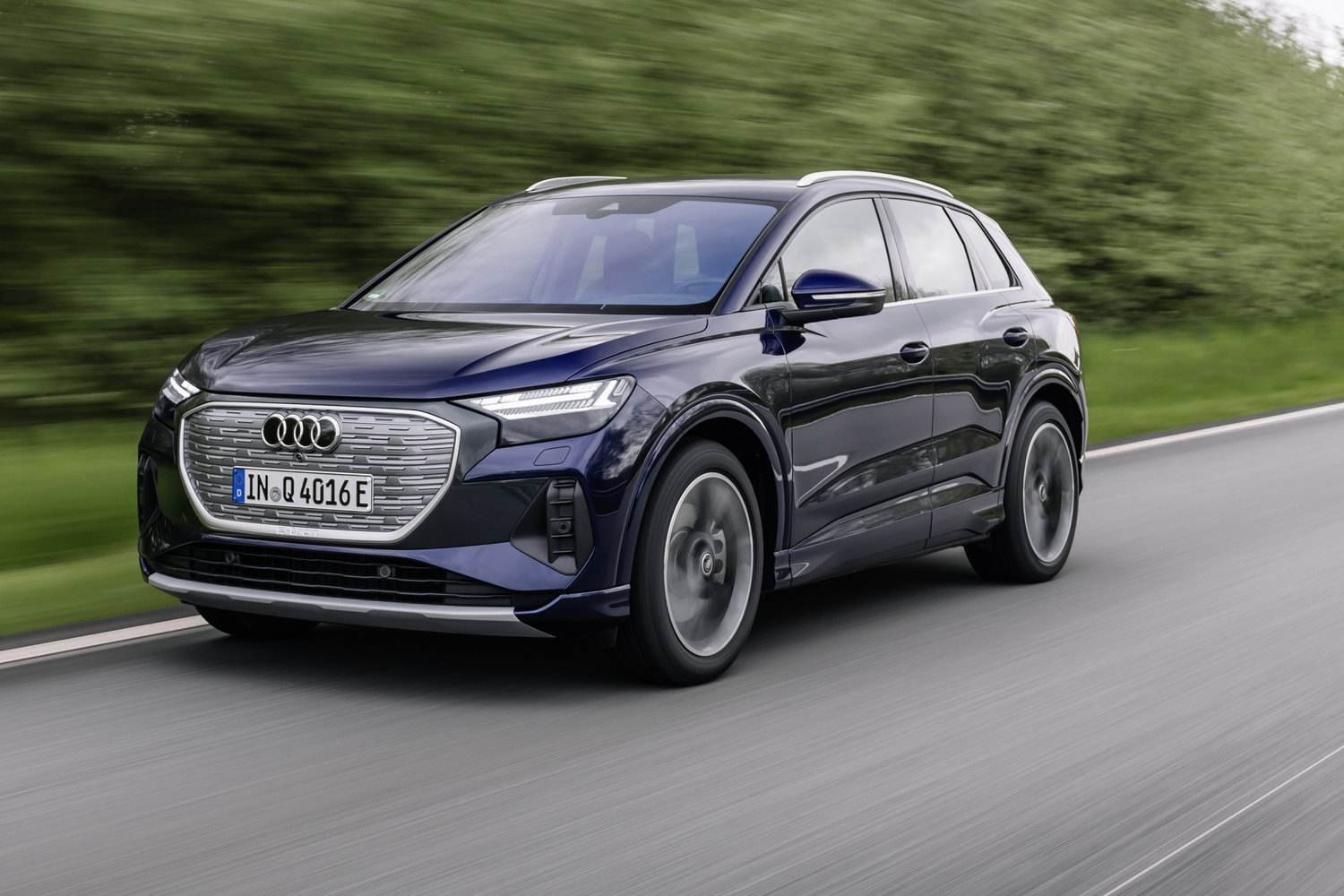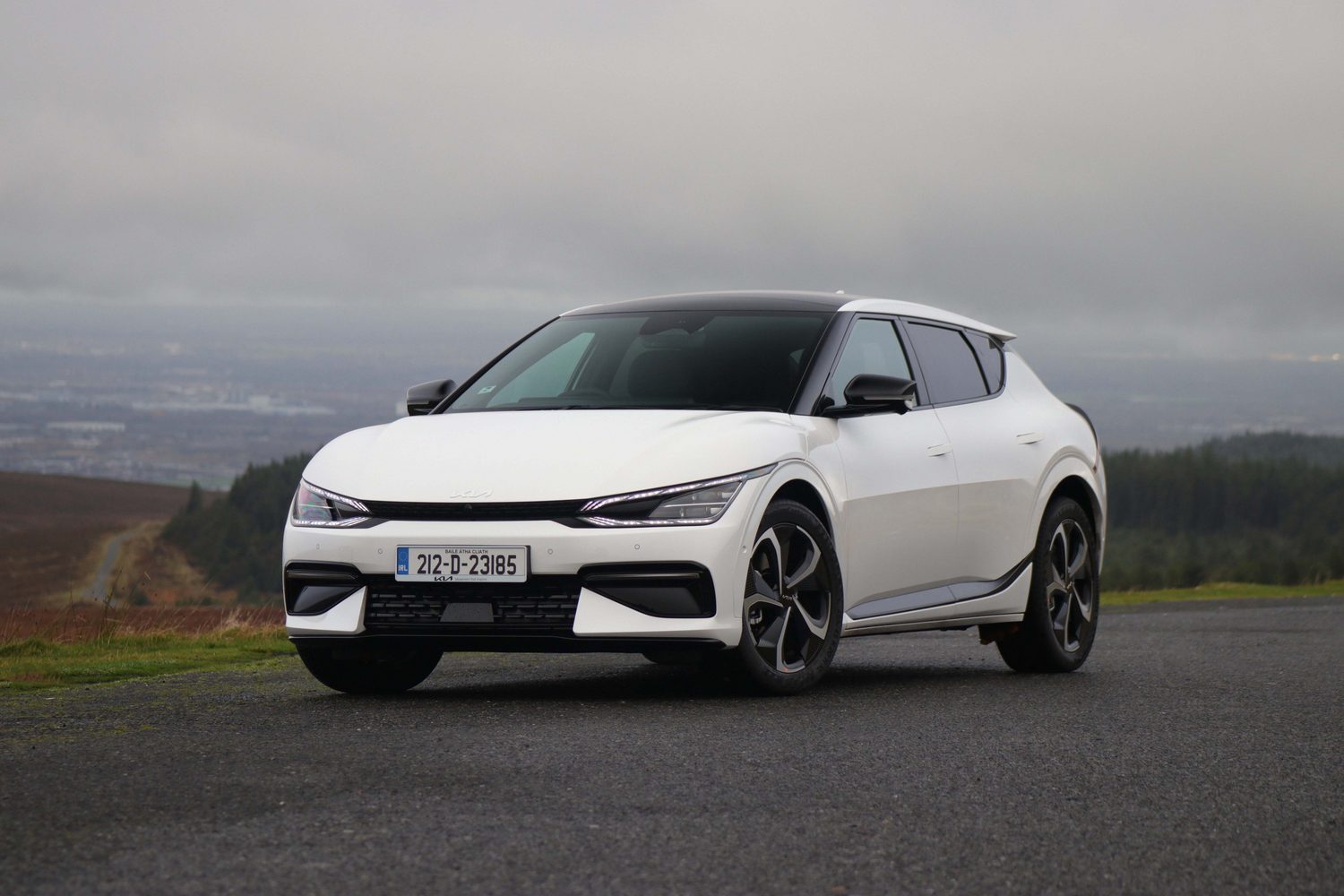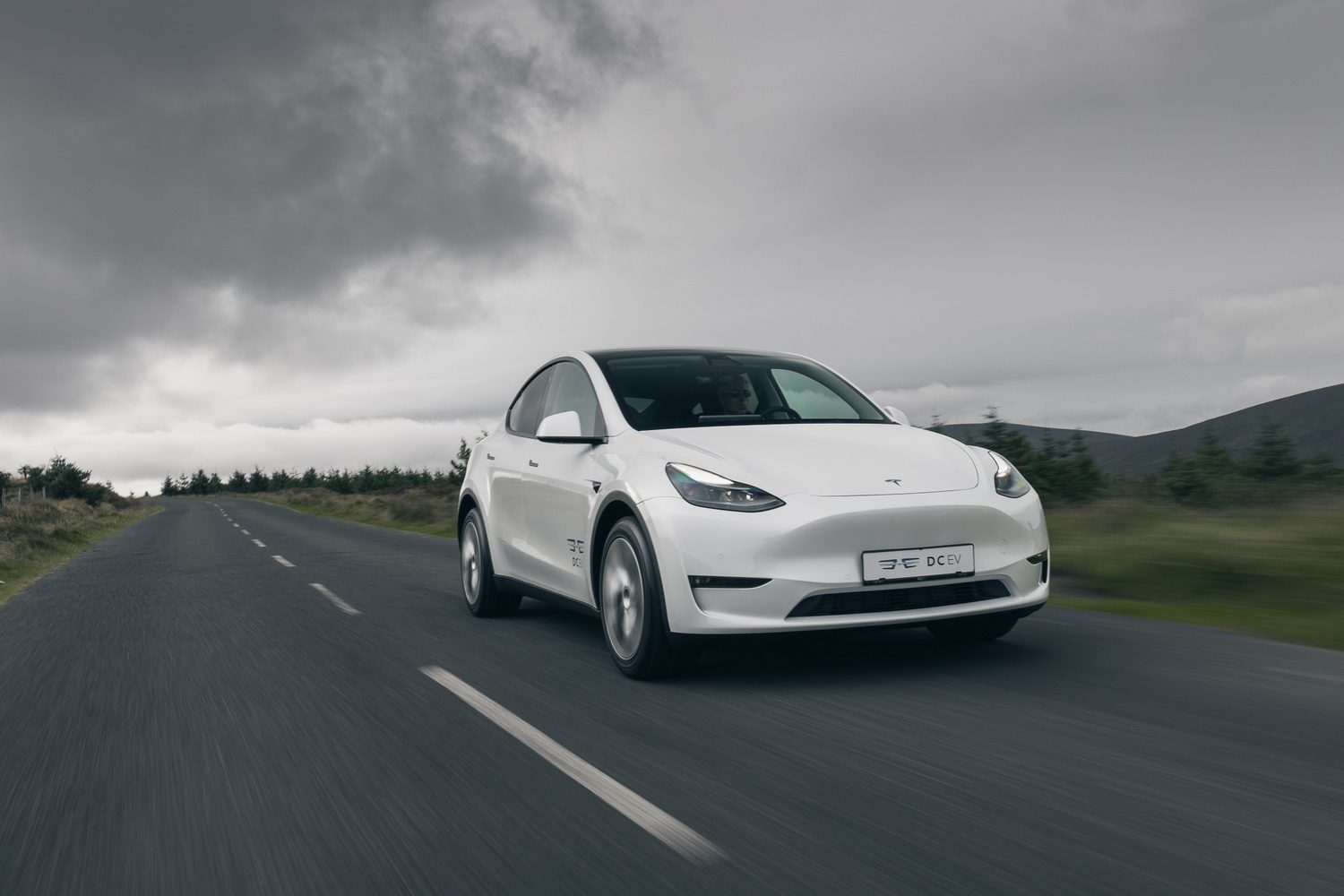Volkswagen adds an extra electric motor, tweaks the suspension and ramps up the power output to create the ID.4 GTX. Is it truly sporty, though? Can it stand up and be counted next to its illustrious GT-badged brethren?
In the metal
I don't think you can deny that the Volkswagen ID.4 is a rather handsome car. Certainly, with its longer, more prominent bonnet, it looks better balanced than its smaller brother, the ID.3 hatchback. The ID.4 clearly shares design cues with the ID.3, but it has rather more in the way of hauteur. It's also, arguably, the best-looking of the three Volkswagen Group SUVs based on the MEB electric car platform. Both the Audi Q4 e-tron and the Skoda Enyaq have their visual charms, but both persist with a now-pointless radiator grille, which the VW - with more in the way of intellectual honesty - does away with.
However, this is no ordinary ID.4, but the ID.4 GTX - that makes it the first of VW's electric car family to get a sporting badge. GTX sits in the line-up alongside GTE, GTD, and of course GTI. These are the first electric steps on hallowed ground, and VW has given the ID.4 a suitably subtle exterior makeover to announce that fact. It gets model-specific bumpers, front and rear, along with a contrast-coloured rear diffuser. There's also some neat, but purposeful, GTX badging scattered about, and - for our test car - a set of gorgeous 21-inch 'Narvik' alloy wheels (20-inch 'Ystad' alloys are standard for the GTX in Ireland). Plus, our test car set all that off with its paintwork - 'King's Red,' which seems suitable given its deep, regal hue.
Inside, you get some wonderfully comfortable high-backed bucket seats (which, alas, don't get the fabulous tartan centres of the GTI family, but the front ones do get a massaging function in this GTX Max model), a 12-inch infotainment screen, a digital instrument screen, an augmented reality head-up display, GTX badging on the steering wheel and a big panoramic glass roof.
The ID.4, since it was launched, has been a significant step ahead of the ID.3 when it comes to cabin quality, and that remains the case here. It has loads of space, and there's just about enough room for three adults to sit side-by-side in the back seat, helped by the flat floor. The boot, at 543 litres, is smaller than that offered by the Enyaq, but still very useful, although it is a shame that VW couldn't have engineered room for a 'frunk' boot up front with space for the charging cables if nothing else.
There are still some drawbacks, however. The infotainment system remains somewhat slow at times, taking longer to react to a press or a swipe than is ideal (indeed, sometimes just not responding at all). It also takes way too many presses and swipes to find simple, vital controls such as the dimmer for the screen brightness. The augmented reality head-up display, meanwhile, is a touch under-fed, looking rather disappointing compared to systems offered by some rivals (Citroen, most notably). It's also not positioned properly - the driver's seat is slightly offset to the left, which means that your eyeline doesn't line up properly with the projection of the HUD, so it ends up looking a touch blurry, no matter how it's adjusted. The touch-sensitive 'slider' controls for heating and stereo volume are also still a needless faff.
On the good side, both of the digital displays have crisp, clear graphics, the 450-watt stereo sound quality is excellent and the little twist-switch for the gear selection is a neat and ergonomically sensible idea, one that frees up considerable storage space down on the centre console.
Driving it
The regular ID.4 has an almost perfectly judged chassis setup for its primary role as a family-friendly commuting vehicle. It prioritises comfort and refinement over agility and cornering ability, and in doing so makes for an exceptionally smooth and easy-going drive, one that blends ideally with the silent running of the electric powertrain.
In converting the ID.4 to GTX status, VW has lowered the suspension slightly, stiffened it a little and included adaptive dampers that respond to Eco, Comfort, Sport and Individual settings. Given that it's lower and stiffer, and riding on 21-inch wheels, has the GTX abandoned all of the ID.4's usually wonderful ride quality?
Thankfully, the answer is no - while you can sense a touch of extra firmness about things, the GTX still rides comfortably, even over sharp-edged speed bumps. The suspension is also very quiet, even when dealing with very difficult surfaces, a lesson that some rivals (notably Tesla) could learn.
However, the downside is that the ID.4 GTX continues to feel far more of an ID.4 and far less of a GTX to drive than you might have been hoping. With an extra 94hp on tap, you'd be assuming that the GTX could pummel a Golf R in a straight line, not least thanks to all that electric motor torque. It can't though. A 6.2-second 0-100km/h sprint is certainly not slow, but the extra grunt tapers off pretty quickly, and subjectively the GTX doesn't feel all that much faster in a straight line than a standard, rear-wheel-drive 204hp version. It's brisk, but nothing more than that.
Through the corners, if you're expecting GTI-levels of involvement and excitement, well... It's not that the ID.4 GTX is bad to drive. Far, far from it in fact. It's superbly sure-footed, and settles into a very pleasant twisty-road rhythm. It's just that, as with the straight-line performance, it doesn't feel like an especially big advancement over the standard model. Indeed, given the GTX's extra weight - it's almost 100kg heavier than a ID.4 Pro Performance model, clocking in at an elephantine 2.7 tonnes - it's almost slightly worse in some settings. Through a long, sweeping corner, the GTX initially bites well and, with just a touch of body lean to let you know how hard it's trying, settles in nicely. But the weight is always there, and you can feel it inexorably tugging the GTX away from the inside of the corner, eventually pulling you into inevitable understeer.
To be fair, what were we expecting? Clearly, the MEB platform is in its first iteration, and the GTX is not really being sold as a full-on performance model. Really, it's more of a mildly sporting range-topper, which is fine. Its four-wheel-drive traction has certainly been welcome this week of all weeks (hello, Storm Barra), but ultimately, you'd have to question whether or not you have a valid reason for spending the extra the GTX asks over and above a standard rear-drive ID.4.
That standard model will also have much better range. A basic ID.4 Life with the 77kWh battery will go for an official 511km before needing a recharge. The ID.4 Business cuts that down to 485km, and our ID.4 Max, with its 21-inch wheels, chops that further to 465km. In fact, with the cold weather this week and the need to keep the cabin heater going, that fell even further to around 340km in real-world conditions. That's at an average electric consumption of around 22kWh per 100km. It's still enough to get from, say, Dublin to Cork non-stop, and the GTX charges at a usefully quick 125kW if you can find a fast-enough DC charger, but again a standard ID.4 will go usefully further.
What you get for your money
How much extra? Quite a lot extra. Yes, you can get a basic GTX Business for €53,965 and that model, thanks to its starting price, does benefit from the SEAI grant of €5,000. Our GTX Max test car doesn't, though, and so it costs a whopping €72,047 as tested.
As standard, a GTX comes with plenty of equipment. Aside from the extra motor and four-wheel drive, you get tweaked suspension and steering, metallic paint with a contrast roof, LED Matrix lights with the ID-Light strip built into the base of the windscreen, those wonderful sports seats, keyless entry and start, parking assistance and a rear-view camera.
The GTX Max adds to that the adaptive suspension dampers, the panoramic roof, sun-reflective glass, the biggest infotainment screen, more in the way of electronic driver aids, the head-up display, a 360-degree camera display and a parking memory system.
Worth the extra? Probably not, to be honest, If you're being sensible, a regular ID.4 with a few options would be a better choice, not least because the GTX's extra power, weight and bigger alloys mean that the one-charge range falls below 500km.
Summary
If VW wanted the ID.4 GTX to be the kick-starter for a new family of agile, sporty, engaging electric models then it has missed the mark. Arguably, it would be better to re-badge this car as simply GT, to better reflect the fact that it's really just a range-topping ID.4, rather than a seriously sporting model. Taken in that context, it's an impressive - if rather expensive - choice, but there's far better value to be found elsewhere in the ID.4 range.
























